How to Start a Successful Blog with No Money (Part 1)
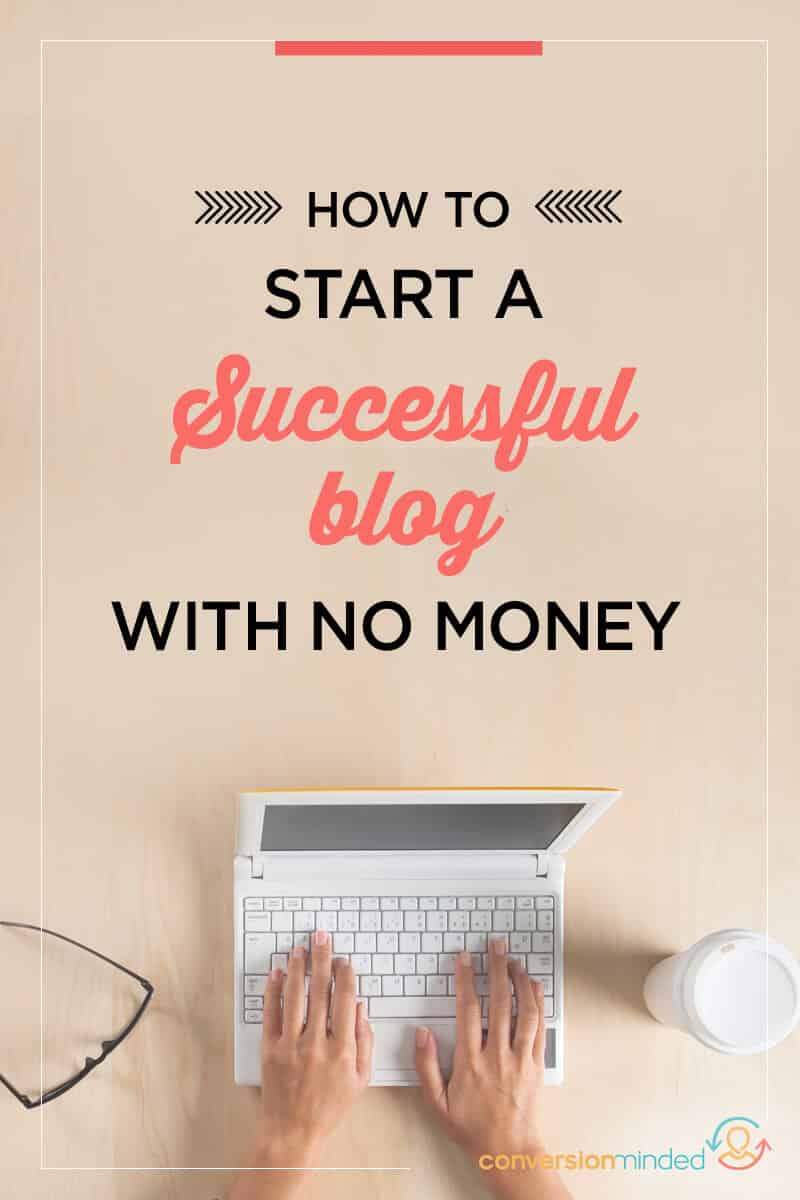
Today, I’m covering how to start a successful blog with no money.
First, let me just say that I love being a blog’trepreneur. I believe it’s one of the most enriching experiences you can have.
There’s such a thrill that comes from being your own boss: You can blog when you want to blog, exercise when you want to exercise, run errands when you want to run errands and create products when you want to create products.
Only you can dictate what you should be working on and when you need to get it done, right?
And when it hits you that you’ve finally (finally!) learned how to start a successful blog, you pinch yourself until it fully sinks in: You can earn an income from anywhere in the world, even from your suitcase, if that’s what you choose.
What an amazing gift…
Still, there are times when you feel lost, like you can’t see your footsteps in front of you.
Being an independent is much different than working in a corporate environment, where you have status meetings, stakeholders, bosses, and deadlines to structure your day.
When you’re a team of one, deadlines can get tossed out the window real quick…
And your freedom feeling can turn into a drowning feeling even quicker.
Let’s get that freedom feeling back, friends!
Today, I’m showing you how to start a successful blog. My goal is to break down the steps and clear up any fuzziness you may have so that you can steer the course of your blog biz with ease.
Let’s assume that you…
…have nothing but a laptop, a few ideas, and skills/passion/knowledge about a number of topics. I’m also going to assume that you have a place from which to work (whether it’s your bedroom, a local café, your kitchen table, or an office) and are looking for:
- clarity about which idea to run with
- a clear direction to take you from idea to profit
- specific milestones to reach
- guidance on how to build your platform and your brand
- monetization examples and models
What’s unique about an online business?
Back in the day, starting a business required money. You had to be able to pay for things like employees, a physical location, materials, labor, marketing (trade shows, brochures, print ads), and more.
Today, you only need what you have right now, lucky girl.
The internet has opened up a whole new world where we can leverage our minds and knowledge to build hugely successful online businesses – at little to no cost. We’re in an era of limitless possibilities and endless opportunities thanks to social media, Google, and global markets.
The question is: how do you go about creating products and services around the things you love to do so that you can earn an income from your blog?
I’m going to share my blogging tips with you right now.
But first, if you’re really ready to launch a blog that makes money, make sure you check out my Blog Business Plan Workbook. I cover all the steps you need to go from idea to launch and beyond! Just click the image below to learn more:
Let’s dig in…
Step 1: First, choose your niche.
This is a biggie.
First of all, let me say Yes, choosing a niche starts with your passions.
But you can’t leave it there. Starting a business on passion alone might not get you to the finish line. I say this because I’ve started many businesses based only on my passions and have fallen flat on my face. Ouch. 🙁
Here’s the thing:
Passions are beautiful and wonderful things, but how we relate to them can make us feel stuck.
In my case, I’d get so obsessed with my “passion of the moment” that I’d close myself off to other ideas that would have likely been easier to execute and more profitable.
So let’s do this…
Grab a sticky note and jot down a passion statement. Then grab another, and another. By passion statement, I mean statements about your interests, skills, and areas of expertise. Write one broad, open-ended statement on each sticky without getting too specific.
For instance, you might say that you are passionate about helping people improve their overall health. What you wouldn’t want to say just yet is that you are passionate about helping older people prevent diabetes. Before we drill down on deets like these, we need intel on what your people secretly want and need (coming up next!).
Keep writing until your passions are out of your head and on the table in front of you.
Now, look at them objectively and decide which one has the most potential to do two things:
- Earn a full-time income
- Attract a wide audience
Boom, there’s your niche. High-five!
Related: How to Choose Your Blog’s Niche and Focus
Step 2: Next up, find your one person
The most successful businesses I’ve launched have filled a specific need in the market.
A need that one person had.
A need that many people had.
We’re talking about target audiences. I prefer not to use this term because I don’t believe we’re shooting at our people with bullets and arrows (which is what I picture when I think “target audience”). Instead, we’re making authentic connections with real humans who have names, faces, interests, struggles, goals, and feelings.
Can you see them standing in front of you right now?
In this step, we’re going to bring them into focus. Here’s how:
First, make some initial assumptions.
Based on your experience and what you know right now, what groups of people might be interested in your topic or need the type of help or training your provide?
If you’re a web designer, you might assume that entrepreneurs just starting their business would be in need of web design and could use your information or talent.
Or, if you’re a fitness instructor, you may have worked offline with women at a local gym to help them get fit and be more active. You may not know specific details about them yet, and that’s perfectly okay. When I launched Conversion Minded, I was unsure about what types of entrepreneurs needed my help and how I could help them.
So I did a little research, which leads me to…
Research, research, research!
It’s time to take your initial assumptions and put them under a microscope.
I started by writing a few blog posts that I knew were off the mark, mainly because I had a vague picture of my people at the time. What helped me, and what may help you, was to research content with a high number of shares on Facebook and Pinterest.
Join Facebook groups relevant to your niche. You may have to hunt around a bit to find groups where members are actively sharing and engaging (vs promotional only). If you join in on the conversations, you’ll learn about your people, the topics that interest them, and how you can help.
Over on Pinterest, there are two ways to research your audience:
First, follow popular bloggers and make a note of any content they share that may be relevant to your people. I recommend documenting your research in a Google Docs sheet so you can always refer back to it.
If you want to step up your Pinterest game, make a note of repin counts. A high number of repins is a good indication that people want to know more about these topics.
Pinterest has recently stopped displaying repins, but you can easily work around it by using Tailwind. Psst…Tailwind is a must-have tool for growing your following, researching content, and driving traffic from Pinterest. If you haven’t already, you can sign up using my affiliate link below.
On Tailwind, there are two ways to view repins:
- Use the Content Discovery tool
- Join tribes
The Content Discovery tool is in beta, but the folks at Tailwind will add it to your account for an additional $4 a month, which is worth it in my book. You’ll see a light bulb in your left dashboard once they do.
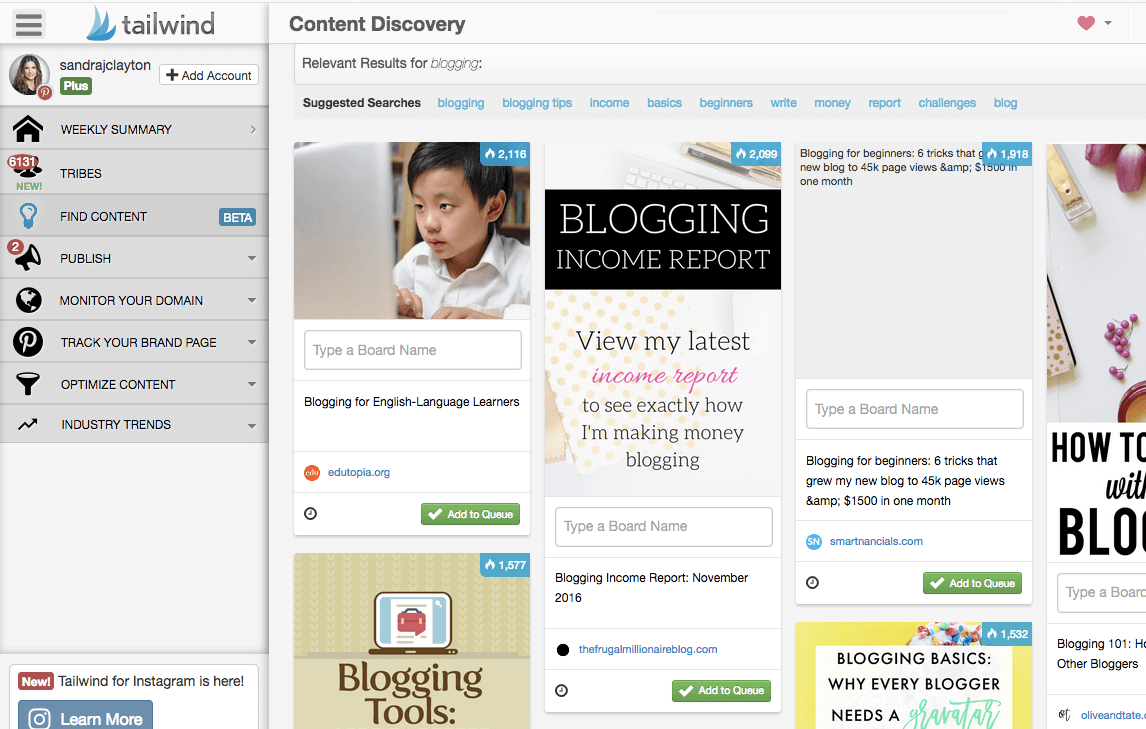
Aaah, those numbers are a sight for sore eyes!
Tailwind Tribes are much like share-for-share threads in Facebook groups, only you’ll need an invite link to join them. Tribes with open invite links are easy to find (I found a number of them through Google) and look like this one from Stephanie’s Blogging & Entrepreneurship tribe:
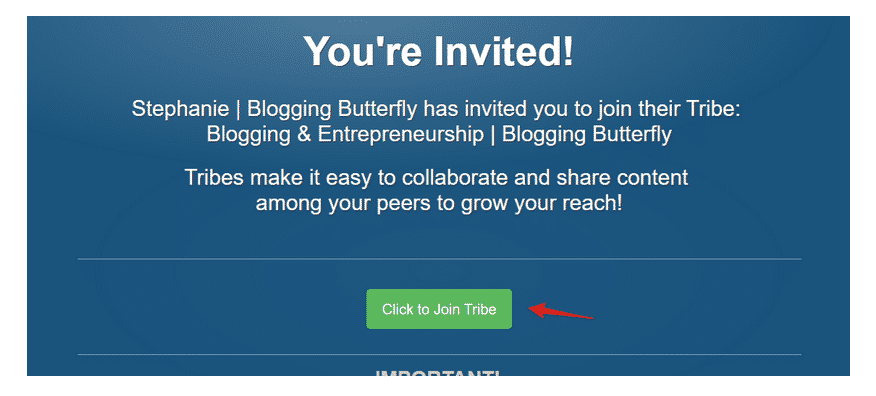
You can also find Tailwind Tribes for your niche by joining these Facebook groups:
Related: 14 Ways to Get Massive Traffic from Pinterest
Step 3: Next, brainstorm products
If you want to learn how to start a successful blog, you have to think about your end goal early on. You’re likely starting to get a picture of how you can help your people at this point. Now, it’s time to brainstorm products and services to bridge the gap between steps #1 and steps #2.
Get ready to fill up the money bucket. Woo!
Think about the general types of products you’d like to offer.
Does it make sense to offer one-on-one coaching? Do you want to package your knowledge up as videos or audio? Maybe you’re more comfortable with creating low-cost Ebooks and guides that require little on-going maintenance and support. Or, you may want to create templates and products and sell them on Etsy or Ebay.
As you work through this step, try not to limit your ideas to one product or monetization method.
There are many ways to make money with your blog, including affiliate marketing, sponsored posts, courses, digital products, coaching, and more.
If you’re a creative (graphic designer, copywriter, interior designer, photographer), you may want to offer freelance services. You can also combine services + products.
For instance, maybe you offer group coaching programs where you walk people through doing something step-by-step and individual coaching to help them implement what they learn. Then, you offer your services to fill in the gaps to help people accelerate their progress.
What products are you comfortable creating?
The product types you choose will largely be based on what you’re comfortable creating and offering. Ebooks and workbooks are relatively easy to create using InDesign or Canva. If you’re comfortable with technology, you can jump right in and create a full-blown course using Teachable and Screenflow (Mac) or Camtasia (PC).
There’s no one-size-fits-all here, friend. If you’re not comfortable offering a certain type of product, don’t do it! When I started Conversion Minded, the one thing I knew was that I didn’t want to work with clients anymore. I’d been freelancing for some years and wanted to scale my business beyond a one-on-one model, so digital products and courses made sense to me.
The same will happen to you: You’ll naturally gravitate to product types that suite your personality and skills. Do you love YouTube? Create a video course! If you’re more comfortable with images and text, creating an Ebook is a great option (this is where I started).
How quickly do you need money?
This is a biggie, and something we can’t overlook…
Products can take a while to create. I just finished creating my first full-blown course after working on it for four months. Woop woop!
Sooo…
If you need to earn an income from your blog, like – yesterday, you may need to offer consulting or coaching services, even if you feel burned out like I did (I freelanced much longer than I wanted because I had to).
If this sounds familiar, don’t sweat it. Work one on one with clients to start, then gradually shift to a one-to-many business model.
How should you price your products?
This one’s a biggie, so I’ll save it for a future post. For now, here are some quick thoughts on pricing:
- Low-cost Ebooks and digital products: Range from $7–$47. Keep in mind that the higher price points ($35–$47) will allow you to grow your email list and generate a profit using Facebook ads.
- Group coaching programs: Anywhere from $1,000 to $2,500 and up
- Full-blown courses: Range from $99 to $999 depending on your value proposition and promise. As a general rule of thumb, if your course can deliver specific and measurable results, you can charge higher prices.
Ideally, you’ll offer a variety of products at different price points.
For instance, you may want to create a $47 Ebook and a $167 course around the same topic, another course for $497, and a group coaching program for $2,000.
Some of your peeps will have smaller budgets (raise your hand!) and others will have more to spend. By accommodating both groups of people, you’ll give them more options to choose from and create multiple streams of income.
Related: Create a Killer Facebook Ad Strategy for Your Email List and Products
You can leave your product ideas here or go ahead and launch a working product. If that’s your plan, read through and follow path #2.
Step 4: Create a working online brand
If you don’t already have a website, time to create one!
Nothing fancy, all you need is your bare-minimum brand identity. A simple landing page for a website will do.
You want to create your hub without spending a ton of time perfecting it. The reason is that you’ll likely make a lot of changes in your business over the coming months. We’re not setting anything in stone just yet, k?
For instance, when I launched Conversion Minded I knew my start was going to look much different than my finish. So, I gave myself a deadline of two weeks to create my online brand. Then, once I was crystal clear on my people and the direction I wanted to go in, I rebranded.
#MORALOFTHESTORY If you get sucked into design early on, you’ll have less time to start! Build your brand as quickly as possible. You’re going to have plenty of time to refine it later on. Promise.
What should you include in your brand identity?
Here’s what you need in your brand kit:
- Logo
- Social media templates
- Colors, fonts
- Website or landing page
- Watermark
- Favicon
- Bio
- Social media profiles
- SM descriptions
Now, you’re probably thinking Sandra, you just said to move quickly, and there’s a lot here! How am I supposed to create all of this?
I hear ya! Sometimes things sound so easy ’til you dig in, right? Brand elements are one of those things you need to have in your back pocket. You want then when you’re ready to post on Instagram, you’re not struggling with image sizes, colors, or where to place your logo.
Psst…You can save time and use the done-for-you templates, logos, and graphics in my Build Your Brand Tool Kit. Click here to learn more the Build My Brand Tool Kit.
Don’t forget your value proposition! Part of your brand identity process is to create your elevator pitch. Why should people read your blog? What’s your unique angle? Why should they buy your products or services? A value prop will help you get crystal clear on the unique value that only you provide, so that you can communicate it front and center on your website and in your content. I cover how to create value props in this post.
Wrapping it up!
You now have some initial product ideas, a direction for your blog, you know your people, and you have a brand identity and presence. Time to start building your platform, creating products, and building sales funnels.
If you’ve followed the Blog Profit Plan series, you’re familiar with these four buckets:
- Content
- Traffic
- Subscribers
- Products
These are the buckets you need to fill to accelerate your growth and amplify your profits quickly.
In my next post, we’re going to look at the strategy to filling each bucket in a way that “pours” seamlessly into the next.
Spoiler: There are two paths for bucket-filling:
Path #1: Build a platform first
In path #1, you’re building your brand and platform from the ground up. The sequence looks like this:
- Content
- Traffic
- Subscribers
- Product
See how we’re selling products as the last step in this model? That’s because we’re focusing on laying a foundation first.
Path #2: Create a product first
We’re switching things up and creating products first, then building a platform and driving traffic. Here’s the sequence for path #2:
- Product
- Traffic
- Subscribers
- Content
Which path is best for you? It depends on:
- How quickly you need to monetize – if your answer is right away, start with path #2.
- How well you know your people and what they need – if you need more time to research, go with path #1.
A big mistake I see a lot of people make is to try to take shortcuts.
Nope, shortcuts won’t work.
Here’s why:
Both paths require visibility in the market. First, people need to know that you exist. Then, they need to trust you before they can commit to a purchase.
This means that no matter which path you choose, the core of your growth strategy lies in steps #2 and #3: traffic and subscribers.
Of course, there’s a whole lot more to it than that. I dive into the specifics of each path in this post:
Part 2: How to Start a Business with No Money, A Laptop, and an Idea
Don’t forget to check out my Blog Business Plan Workbook. I cover all the steps you need to go from idea to launch and beyond! Just click the image below to learn more:


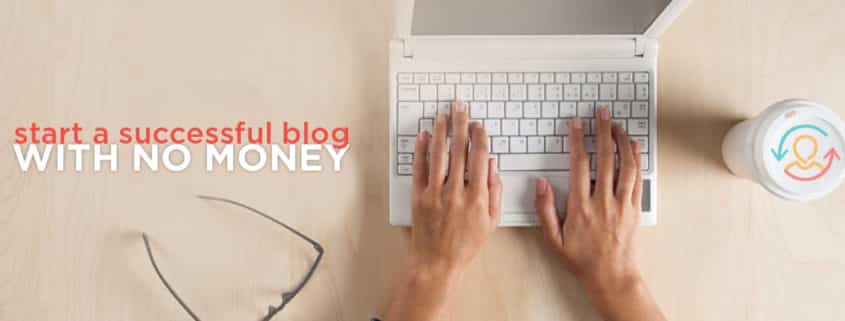


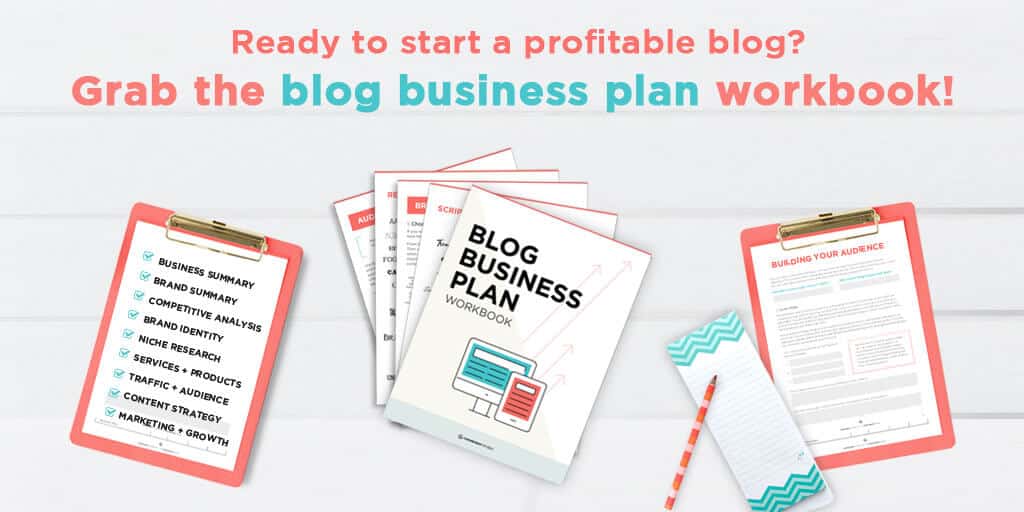





This was very helpful especially the Pinterest piece. Thank
You
You’re so welcome, Julie. I’m glad it was helpful!
This is a very helpful post. I am trying to attract subscribers right now so I am making some free printables/E-book – thank you for sharing!
Hey Stephanie. I”m so glad the post was helpful. Free ebooks and content upgrades are how I’ve built my mailing list, so it’s definitely a good way to go.
Love how you emphasize the research part, it is sooo important! Thanks for all your tips!
You’re so welcome, Sophie.
These are seriously amazing tips! I’m ready to take my blog to the next level and definitely learned from this!
Thank you, Amy!
Thank for sharing. I truly want to make money from my blog…I just haven’t dedicated time to learning. Thank you for this…it’s a start for me. Charlene-https://faithtoraisenate.com
You’re so welcome, Charlene. Good luck with your blog. 2018 is a new year, right? 🙂
This is a great post about starting a blog. Most of the posts I’ve read in the past were very surface level. I really liked how you broke down how to decide on what to charge for your products.
Thanks for your comments, Leah!
I set up a new blog 10 days ago… At this point I am only doing affiliate products. I haven’t figured out how to make consistent sales though.
I like the part of your post that talks about pricing, that is really important.
Thanks Peter. I think the way to go with affiliate marketing is to include affiliate products as part of a challenge or free course. If you can drive traffic to those and include products as part of your email sequence, you can start to see some consistent sales.
That’s a great idea. It is different from putting links in posts.
Thanks, Peter. Yes, this post is about creating products rather than affiliate marketing to monetize.
Excellent article with so many valuable insights! Thanks for sharing!
You’re so welcome, Natasa.
This is going to be my checklist for what to do next… Thank you!
You’re so welcome!
I can’t express how helpful this post is! Thank you so much! I’m selling products too. My issue is how to convert people to buying directly from my website. I make sales through other platforms like Etsy and Creative Market. But I don’t know how to establish trust and make conversions with on the website. Also, do you have any tips on how to find clients if you need money sooner?
Hi Tia, Thank you so much for your comments. You really need content funnels and sales funnels to convert people from your website. By content funnels, I mean driving traffic to a blog post and including a free offer related to your product. From there, I’d create a sales funnel in your emails that: 1) helps people utilize your freebie, 2) shares your story, successes, challenges, 3) offers tips and hacks related to the freebie and your product, and 4) pitches your product. You can go for a soft sell on the first 2 emails, then a direct pitch, then 2 more soft sells, etc. That’s a quick overview, I hope you get the gist. 🙂 To get clients sooner, I’d use social media (FB groups, LinkedIn, Twitter) and hold webinars around topics that your audience wants to know more about. I’ve gotten clients directly from LinkedIn and Twitter by messaging them. This post walks you through the steps on LinkedIn: https://conversionminded.com/use-linkedin-to-get-clients/ I hope that helps!